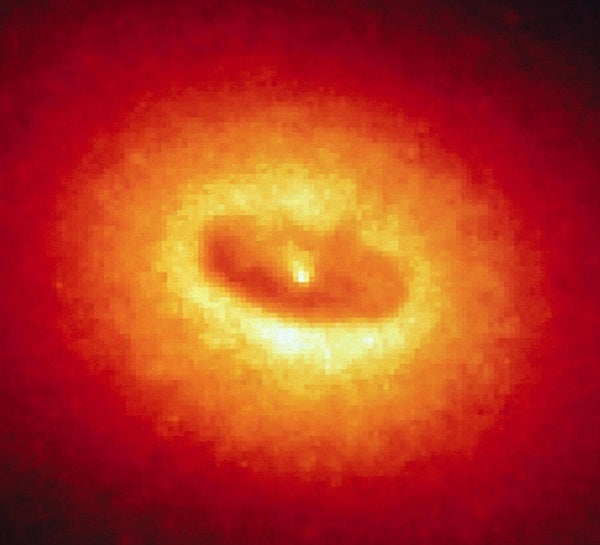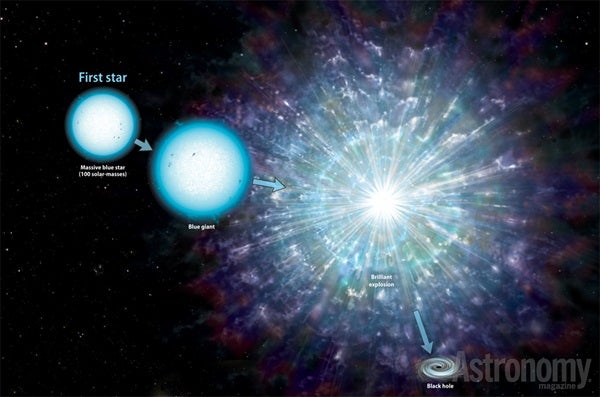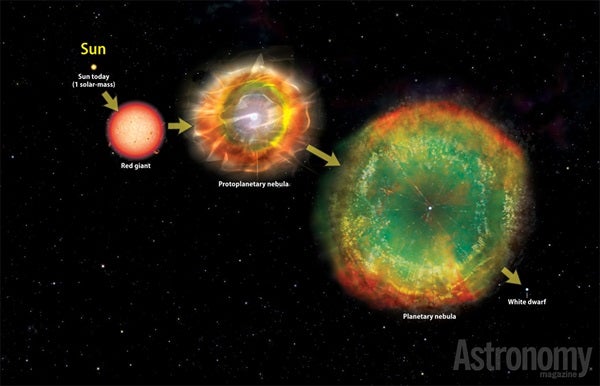Although astronomers understand certain aspects of the universe clearly, others are more muddled. The Big Bang has a mountain of evidence behind it, while the picture of how protogalaxies evolved into normal galaxies in the first few billion years of the cosmos is just coming together. But what happened, exactly, at the end of the cosmic Dark Ages, following the Big Bang, that brought together the seeds of matter to form the first stars and galaxies? That question is still wrapped in a hazy cloud of mostly speculation.

Bringing the universe to your door. We’re excited to announce Astronomy magazine’s new Space and Beyond subscription box – a quarterly adventure, curated with an astronomy-themed collection in every box. Learn More >>.
At the core of the issue is which came first: stars, galaxies, or black holes? With respect to galaxy formation, many astronomers believe in the “bottom-up” model of how matter came together. In this model, small clumps merged repeatedly to form protogalaxies, and further, that many small protogalaxies clumped together to form the larger, normal galaxies we see in the nearby universe today. But others believe giant sheets of matter formed in galaxy superclusters and then broke apart into smaller units. Either way, no one yet knows whether the gas and dust that came together to make galaxies preceded star formation or whether stars formed simultaneously as the first units of matter fell together to form the earliest protogalaxies.
A more intriguing question arises from observatios of numerous quasars in the early universe. Quasars are the energetic “central engines” found in infant galaxies that spew vast amounts of high-energy radiation into space. They are the second most energetic things in the universe (following the Big Bang) after certain gamma-ray bursts. Matter spiraling into black holes at high velocities creates quasar emissions. By observing quasars in so many galaxies in the early universe, astronomers have come to believe quasars existed in virtually every galaxy near the beginning, save for tiny ones not massive enough to support a central black hole. So an intriguing question has come about: Did galaxies form and develop black holes in their centers, or did black holes form first and act as the gravitational “seeds” that attracted matter to form galaxies?
The jury is still out on this question. However, astronomers have conducted some research that may provide clues. In 2003, Marianne Vestergaard, then a postdoctoral fellow at Ohio State University, suggested black holes form first as galaxy seeds.
Vestergaard studied a collection of quasars about 12 billion light-years distant. Rather than postulating that black holes form after matter builds up in the centers of galaxies, she “think[s] that black holes start forming before galaxies do, or form at a much faster rate, or both.”
The evidence came from studying a set of quasars from Sloan Digital Sky Survey data and comparing their spectra to those of quasars that are closer to Earth. After looking at several hundred quasars, Vestergaard noticed a pattern: Even the smallest, most inactive galaxies studied have supermassive black holes at their centers.
Presumably, those black holes should have taken a considerable amount of time to grow to their current sizes. However, the galaxies surrounding them showed signs of youthful vigor. This suggests the black holes may have come first.












